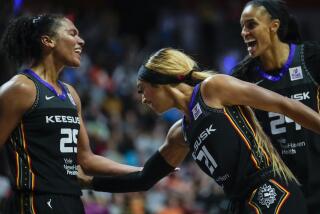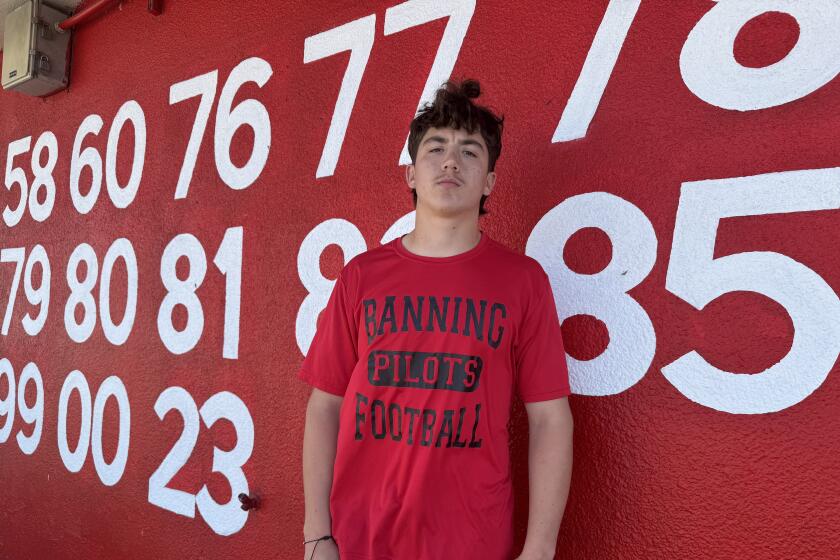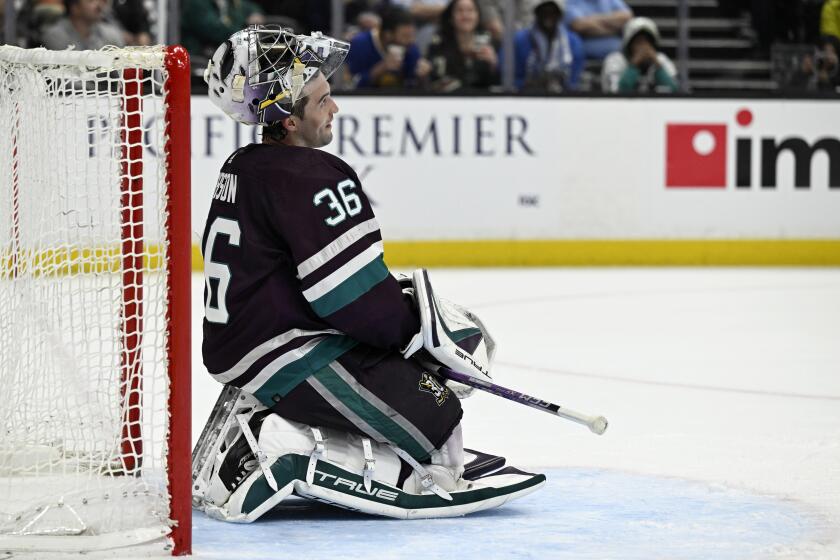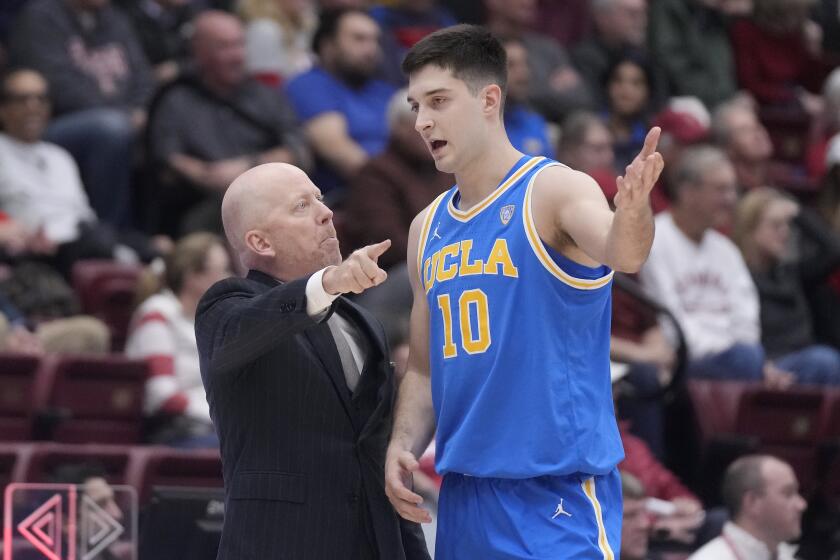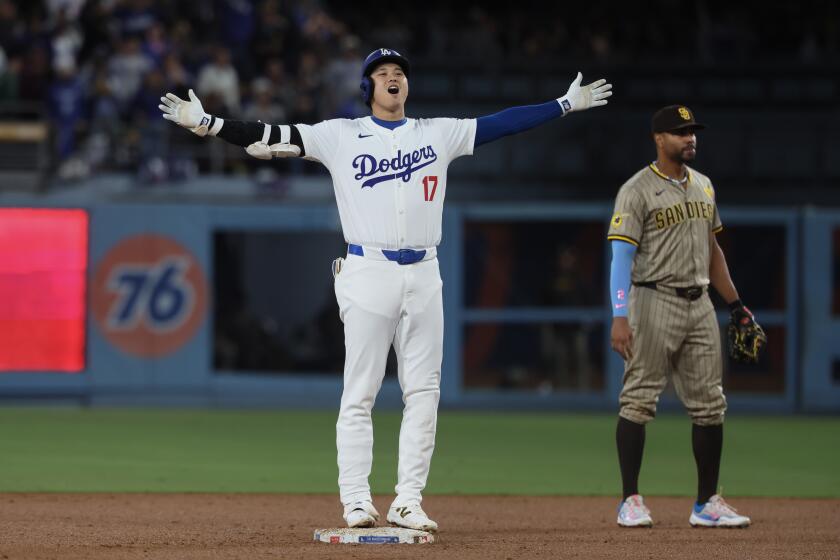Roughly, It’s a Numbers Game
In 1951, John Oswald had a vision. What he saw was harder than runway concrete and faster than a vacation.
Oswald was chairman of the greens committee for the 1951 U.S. Open at Oakland Hills Country Club in suburban Detroit, and he didn’t keep his vision a secret. In fact, he proclaimed it aloud.
“The Open is the greatest title there is,” Oswald said. “The course should be so hard, nobody can win it.”
Somebody named Ben Hogan did, though he shot seven over par in doing it.
Something similar occurred in 1970, when the U.S. Open was held at Hazeltine National Golf Club on the outskirts of Minneapolis.
The course not only featured 13 doglegs, but more than half the holes had some kind of blind shot to the green. This meant the layout was perfect for players with severe hooks and seeing-eye dogs.
Bob Rosburg shot 79 the first day at Hazeltine, then said he felt as if he had just been let off his leash.
“It’s got so many doglegs, it must have been laid out in a kennel,” Rosburg said.
Dave Hill shot a 69 the second day and was asked what Hazeltine lacked.
“Eighty acres of corn and a few cows,” Hill answered.
The United States Golf Assn., which chooses the U.S. Open courses and establishes the playing conditions, didn’t do anything to punish Hill. But the PGA Tour, which has nothing to do with the Open, fined him $500 for his comments.
So much for free speech.
Yes, the people at the USGA take their national championship just as seriously as John Oswald did, which is sort of what Hogan and Hill discovered 19 years apart.
But the days are gone when U.S. Open courses were suspect and the conditions seemed inspired by Freddy Krueger in a Panama hat, starched white shirt, seersucker pants, blue tie and blazer.
Now it’s Tom Meeks’ job as chairman of rules and competition for the USGA to oversee the conditions, which are standardized.
“We want to challenge the best players in the world,” Meeks said.
“All these people who say nasty things about the USGA, we’re not going out there specifically to try to keep people from beating par. If we are satisfied with what we set up, I don’t care what the player shot.”
You can be sure that when the 97th U.S. Open begins Thursday at storied Congressional Country Club in Bethesda, Md., the players will not suggest planting crops as a better use of the land.
But that doesn’t mean Congressional won’t be a difficult place to play golf for four days.
Why, you ask?
First, answer this riddle: What is green, five inches tall and not related to Kermit the frog?
Yes, it’s the rough at a U.S. Open. For anyone who doesn’t know, rough is the grass or weeds or steel wool that runs along the sides of each fairway and usually to the rear and sides of each green.
Primary rough is the primary means to identify the U.S. Open. Rough is what the Open is known for . . . well, rough and high scores and sometimes quirky results (see Andy North 1978, 1985).
The idea is for the rough to penalize bad shots, which is usually done by swallowing golf balls.
As recently as the 1995 Open at Shinnecock Hills in Southampton, N.Y., golf balls were disappearing into the rough with such regularity that the price of dimples went up.
Corey Pavin, who won at Shinnecock Hills, sees nothing wrong with such conditions.
“Actually, I think the rough is too short,” Pavin joked. “I’d like to have it knee deep. But, you know, tough conditions, that’s what makes a major great.”
By the way, Pavin was the only player who shot par there.
The playing condition of the golf course is called its “setup.” And you won’t find a tougher setup for a major title than at a U.S. Open. But at least the players should know what to expect now, because of standardization.
The length of the primary rough is five inches. To influence the rough to stand up properly, the USGA goes over with it blowers or mowers and then clips it differently than normal.
There have been more than a few players who think the USGA rakes the rough toward the tees.
Oh, my, no, USGA Executive Director David Fay told Golf Digest.
“The next thing they’ll say is that we’re handing out chewing gum to the spectators and asking them to drop it in the landing area to kill roll on the tee shots,” Fay said.
Uh, now that you mention it. . . .
Speaking of rough, there is six feet of 1 1/2-inch tall intermediate rough closest to the fairways.
The grass on the fairways is kept at seven-sixteenths of a inch, tees are mowed to three-eighths of an inch and collars around the greens are a quarter of an inch.
Greens are supposed to be kept at five-thirty-seconds of an inch, although the USGA is more interested in speeds that register about 11 on the Stimpmeter, which measures how many feet a ball rolls on the green.
Then there is the issue of fairway width. Critics say it is almost as easy to slide yourself beneath a door as to safely land a golf ball on a fairway at the U.S. Open.
The standard fairway width ranges from 26 to 32 yards, which means players don’t have to walk single-file to the green, as some have complained.
Meeks said he isn’t totally immune to such criticism.
“I almost want to say, when a player complains about the setup, ‘Well, next year, why don’t you do us both a favor and not play?’ I don’t say that, but I think it. Nobody forced anybody to be here.”
The party line from USGA officials about the Open setup is that they are not trying to embarrass the best players in the world, they are trying to identify them.
Actually, the first criticisms of setups at the Opens probably can be traced back to the 1948 Open at Riviera. Willie Hunter, the Riviera pro, told the USGA’s Joe Dey there was no need to grow the rough any higher because the elephant grass rough was tall enough.
Dey reluctantly agreed, then watched Hogan torch the course, beating the U.S. Open record by five shots. Dey smoldered.
The next time the Open was held in California, it was at the Olympic Club in San Francisco in 1955. According to most accounts, the rough at the Olympic Club was the worst anyone had witnessed. It was hip-high in places. Porky Oliver actually lost his golf ball taking a free drop.
Little-known Jack Fleck was the winner, beating Hogan in a playoff. So much for identifying the best players in the game.
Chances are that typical U.S. Open conditions will exist at Congressional. The rough will be tall, the fairways narrow and the greens fast. And there will be enough criticism from players to stretch to Capitol Hill. Just be prepared. After all, what would the U.S. Open be without it? In this tournament, it’s rough out there.
(BEGIN TEXT OF INFOBOX / INFOGRAPHIC)
A Tough Par
A look at the relatively high scores that have won the U.S. Open in the past 10 years:
*--*
Year +/- Par Winner 1996 -2 (278) Steve Jones 1995 Even (280) Corey Pavin 1994 -5 (279) Ernie Els 1993 -8 (272) Lee Janzen 1992 -3 (285) Tom Kite 1991 -6 (282) Payne Stewart 1990 -8 (280) Hale Irwin 1989 -2 (278) Curtis Strange 1988 -6 (278) Curtis Strange 1987 -3 (277) Scott Simpson
*--*
1996 WINNERS
*--*
Tourney +/- Par Winner Mercedes Championships -17 (271) Mark O’Meara Nortel Open -11 (273) Phil Mickelson Phoenix Open -15 (269) Phil Mickelson Buick Invitational -19 (269) Davis Love III Hawaiian Open -11 (277) Jim Furyk Nissan Open -6 (278) Craig Stadler Doral-Ryder Open -18 (269) Greg Norman Honda Classic -17 (271) Tim Herron Bay Hill Invitational -13 (275) Paul Goydos Freeport McDermott Classic -13 (275) Scott McCarron Players Championship -18 (270) Fred Couples Bellsouth Classic -8 (280) Paul Stankowski Masters -12 (276) Nick Faldo MCI Classic -19 (265) Loren Roberts Greater Greensboro Chrysler Classic -14 (274) Mark O’Meara Shell Houston Open -14 (274) Mark Brooks GTE Byron Nelson Classic -15 (265) Phil Mickelson Mastercard Colonial -8 (272) Corey Pavin Kemper Open -14 (270) Steve Stricker Memorial Tournament -14 (274) Tom Watson Buick Classic -13 (271) Ernie Els Fedex St. Jude Classic -26 (258) John Cook Canon Greater Hartford Open -10 (258) D.A. Weibring Motorola Western Open -18 (270) Steve Stricker Michelob Championship at Kingsmill -19 (265) Scott Hoch British Open -13 (271) Tom Lehman Deposit Guaranty Golf Classic -16 (268) Willie Wood CVS Charity Classic -16 (268) John Cook Buick Open -18 (266) Justin Leonard PGA Championship -7 (277) Mark Brooks NEC World Series of Golf -6 (274) Phil Mickelson Greater Vancouver Open -12 (272) Guy Boros Greater Milwaukee Open -19 (265) Loren Roberts Quad City Classic -12 (268) Ed Fiori LaCantera Texas Open -13 (275) David Ogrin Walt Disney World Classic -21 (267) Tiger Woods The Tour Championships -16 (268) Tom Lehman Sarazen World Open -16 (272) Frank Nobilo Lincoln-Mercury Kapalua International -21 (269) Paul Stankowski
*--*
U.S. Open Congressional 1997
* WHEN: Thursday through Sunday (18-hole playoff would be Monday in case of a tie).
* WHERE: 7,213-yard, par-70 Congressional Country Club, Bethesda, Md.
* DEFENDING CHAMPION: Steve Jones.
* TV: Thursday and Friday, ESPN, 8-11 a.m. and 2-4:30 p.m., and Channel 4, noon-2 p.m.; Saturday and Sunday, Channel 4, 9:30 a.m.-3:30 p.m.
More to Read
Go beyond the scoreboard
Get the latest on L.A.'s teams in the daily Sports Report newsletter.
You may occasionally receive promotional content from the Los Angeles Times.
